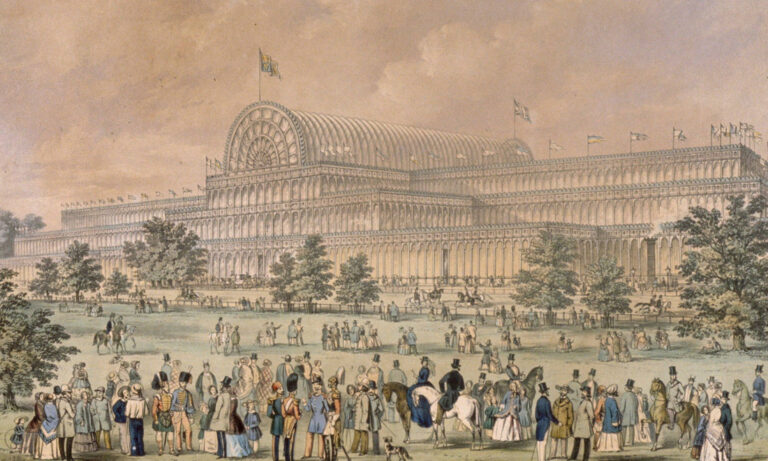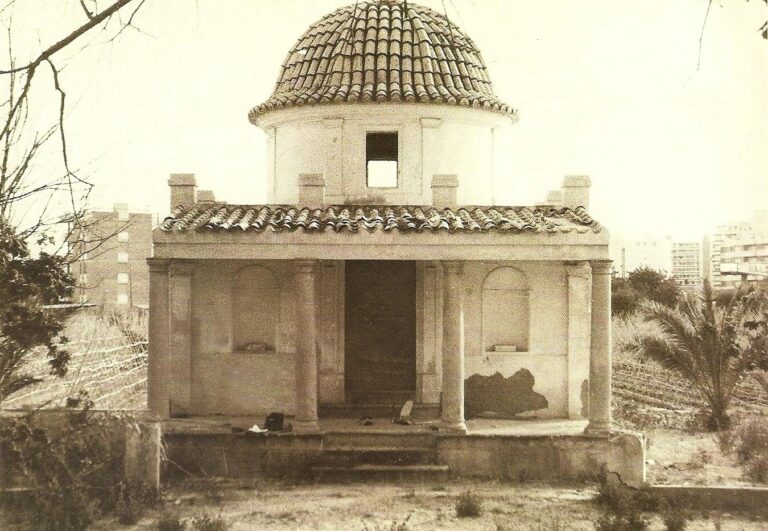Capucho Estate
Located in the Fabraquer area, next to the Camino Reial de la Vila Joiosa. There is evidence that the Capucho estate already existed in the 17th century, but it could have been built earlier. Since then it has been the gardening residence of the Barons of Finestrat. The wines and silks harvested on this estate were so famous that they were exhibited as worthy Alicante articles at the Great London Exhibition of 1851, where different types of wine and silks, products from the estates of the area, were selected. Fifth Baron of Finestrat.
The lineage of the Barons of Finestrat has been linked to Finca Capucho since its origins. The First Baron of Finestrat, D. Jacinto Forner y Bernabéu together with his wife Mrs. Jacinta Talayero y Torres They celebrated their daughter’s wedding in the oratory of the estate. II Baroness of Finestrat, Mrs. Josefa Jorner y Talayero (1661-1718) who married here the prestigious jury of Alicante, Mr. José Pascual del Pobil y Gisbert, famous for his defense of the city of Alicante, from the bastion of San Carlos, during the bombardment by sea by the French Navy in 1691. Since that marriage, the fertility of the family has been the dominant trend, since the Barons of Finestrat had at least 10 children for each generation, at least until the middle of the 19th century.
During the first half of the 18th century, the Capucho estate was owned by the 5th Baron of Finestrat from Alicante, D. José María Pascual del Pobil y Guzmán (1777-1864). In 1816 he married the Valencian woman in the Capucho oratory. Mrs. Esperanza Estellés and Cervera, with whom he had fourteen children. One of his daughters, Mrs. Easter Conception of Pobil Estellés, the thirteenth that would end up residing on the farm that gave it its name, La Concepción farm, located in the urban area of Sant Joan d’Alacant.

Universal Exhibition in London where products from Alicante were exhibited. 1851
La finca Capucho is made up of several buildings that have been attached to the main one in addition to other buildings distributed throughout the farm. It is still possible to recognize the oldest building with characteristics from the 18th century, such as the sloping gable roofs and eaves with pronounced projections, trimmed wooden flashings and flat tiles. On the ground floor there is a passage that connects the interior of this building with the patio, allowing agricultural work to be separated from domestic work. The ocher facades are the result of different transformations over the centuries. The original property was divided into two parts, one is inhabited and in good condition, while the other is abandoned and very deteriorated. The oratory or chapel is not preserved.
The rooms for social life are located on the main floor, while on the upper floor we find the rooms for private life. Throughout the last decades of the 20th century, the structure of this property has been modified to house different single-family homes, in one of which the famous 20th century architect, Mr. Juan Guardiola Gaya, resided. «Although Catalan by origin, academic training and character, almost all of his professional work is developed in the province of Alicante since, since he arrived in this city (1959) he carried out his profession uninterruptedly from his studios on San Francisco Street, from Gerona street in Alicante and from his Capucho estate in Sant Joan d’Alacant. Mr. Juan Guardiola rehabilitated the stables and other storage rooms. On top of the stables themselves, maintaining part and building a new height, Guardiola built his house-studio in which he lived until his death in October 2005. Juan was passionate about gardens and the exotic species with which he rehabilitated those of Capucho, so he managed to ensure that the vegetation sheltered, trapped and hid the different built bodies.
The Capucho garden has always been one of the most famous in ancient times, crossed by two cross-shaped paths, with a pond in the center and various plant areas of great interest. Currently, it preserves countless protected specimens of species such as cork oak, cypress, holm oak, ficus, elm, pine, oak, yucca, hackberry and much more. In the past there was a unfoille or small construction that was intended for the delight of garden users.

Follie from Finca Capucho, not currently preserved (Sant Joan d’Alacant)
The farm borders the Benimagrell path, forming one of the four roads that gives its name to the mythical enclave. This area is one of the few in Fabraquer that still preserves farm fields. But the greatest period of prosperity for Alicante agriculture was in the mid-19th century, when vineyard cultivation was in full expansion. At that time, owners of large areas of the Huerta, such as those of the Capucho estate, “expanded the agricultural area dedicated to the cultivation of vines”… which distributed “…in the English and French markets the fondillon wine from Alicante, the Jijona grape or the Denia raisin.
The quality of Alicante wine was so high that it enjoyed tremendous demand abroad. For this reason, when the Great Exhibition in London was held in 1851, the Spanish government prepared a catalog with the Spanish products that would attend on behalf of the country. The Ministry of Commerce selected all the agricultural products of Alicante: almonds, esparto grass, barralla and, most notably, fondillon wine.





Did you know that...?
The III Baron of Finestrat, D. Nicolás Pasqual del Pobil y Forner (1692-1771), married the Alicante Ms. Vicenta Rovira y Salafranca and they had 13 children. Next in line is the IV Baron, Mr. Francisco Pasqual del Pobil y Rovira, who married María Magdalena Guzmán y Soler in Madrid, who also had 13 other children. His daughter Mrs. Vicenta Pasqual del Pobil y Guzmán, died at the Capucho ranch and was buried at Santa Faz.
The V Baron of Finestrat from Alicante, Mr. José María Pascual del Pobil y Guzmán (1777-1864) and his wife Mrs. Esperanza Estellés and Cervera had fourteen children. Viravens, in his chronicle published in 1876, cites as owners of the Capucho estate the son of Baron Mr. Emilio Pascual del Pobil y Estellés (1830-1902), born on the estate, and his brother-in-law, Mr. Juan Pasqual de Bonanza y Roca de Togores. , who was mayor of Alicante, married to Mrs. María Josefa.
Brother Mr. José Pascual del Pobil y Estellés married Mrs. Rosa Martos Postestad and they had the VI Baron of Finestrat, Mr. José María Pascual del Pobil y Marcos, who was president of the Alicante Huerta Irrigation Union until 1879.
Mr. Emilio Pasqual del Pobil y Estellés, entered the Royal Navy and took a position in the Military Naval College in 1846. As a Lieutenant, he commanded the felucca “San Fernando” in Philippine waters. He went around the world in the corvette “Ferrolana”, being Commander of the Alicante Navy in 1890. He married Elisa Wallace and Dugraise in 1859, and his second wife was his sister-in-law. Mrs. María Luisa Chicheri y Arsú, in 1866 in the city of Rome.
The son of the second marriage, Mr. Emilio Pasqual del Pobil y Chicheri married Concepción Sandoval y Bassecourt (1864-1904). The granddaughter Mrs. Pascual Conception of Pobil and Sandoval She married in 1891 with Nicolás Franco Bahamonde (brother of the Caudillo).
On the other hand, Mr. Francisco Pasqual del Pobil y Estellés, (1829-1863) married María Luisa Chicheri y Arsú (1839-1916), in 1862 in Alicante. Three years after his death, María Luisa married her brother-in-law, D. Emilio. From that second marriage, their son married Mrs. María Victoria Ravello Sánchez, the birth of what would be the second wife of the Caudillo’s brother, D. Nicolás, Mrs. Isabel Pascual del Pobil and Ravello.
It is deduced therefore that the granddaughter of Mrs. María Luisa Chicheri y Arsú, Mrs. Isabel Pascual del Pobil and Ravello, gets married two years after the death of her other granddaughter, Mrs. Pascual Conception of Pobil and Sandoval in 1930, with the same man, the Inspector General of the Corps of Naval Engineers and Ambassador of Spain, D. Nicolás Franco. Therefore, Mr. Nicolás was able to enjoy the Capucho estate from his first marriage in 1924 until his death in 1977. At his bedside in Madrid, he was accompanied to the funeral by his wife and son, Mr. Nicolás Franco Pascual de Pobil, nephew of General Franco, and some other relatives, as well as a group of senior Navy officers.
Mr. Nicolás Franco Pascual del Pobil He played an important role at the end of the Franco regime, where he contributed to the first rapprochement of D. Juan Carlos, named Head of State, because he was his childhood friend and at the same time he was Franco’s nephew with D. Santiago Carrillo, who was in exile. in France. Don Juan Carlos knew that after the death of the dictator, a path was necessary that would lead Spain to democracy, which is why he was trying to contact the communist leader and hold the first conversations in favor of harmony.
